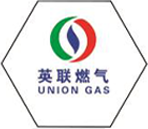
Aug . 18, 2024 10:07
Back to list
Natural Gas Pressure Regulation Station for Efficient Distribution Systems
Natural Gas Pressure Reducing Stations An Overview
Natural gas is one of the most important energy sources in the world today, fueling everything from residential heating to large-scale industrial operations. However, transporting this energy source requires careful management, particularly when it comes to pressure regulation. This is where natural gas pressure reducing stations come into play, serving a critical role in the safe and efficient distribution of natural gas.
What is a Natural Gas Pressure Reducing Station?
A natural gas pressure reducing station (PRD) is an integral component of the natural gas distribution network. It converts the high-pressure gas received from transmission pipelines into a lower, more manageable pressure suitable for delivery to consumers. These stations ensure that the gas reaches its final destination—whether it's a home, business, or industrial facility—at a pressure that is safe and usable.
Importance of Pressure Reduction
Natural gas is transported at remarkably high pressures—often exceeding hundreds of pounds per square inch (psi). This is essential for the efficient long-distance movement of the gas. However, most end users require significantly lower pressures. For instance, residential gas appliances typically operate at pressures around 4 to 10 inches of water column (approximately 0.15 to 0.36 psi). The pressure-reducing station is thus crucial for enabling this transition, preventing potential damage to infrastructure and ensuring the safety of consumers.
Components of a Pressure Reducing Station
A typical gas pressure reducing station consists of several key components
1. Inlet and Outlet Valves These valves regulate the flow of gas into and out of the station. They are essential for shutting down the system in case of maintenance or emergencies.
2. Pressure Regulators These devices automatically adjust the pressure of the gas to the desired level. They ensure consistent output pressure regardless of fluctuations in input pressure.
natural gas pressure reducing station

3. Control Systems Modern pressure reducing stations utilize advanced control technology, including sensors and automated systems, to monitor pressure levels in real-time. This allows for immediate adjustments to maintain safe operating conditions.
4. Safety Equipment Safety is paramount in gas distribution. Pressure reducing stations are equipped with relief valves, emergency shutdown systems, and alarm systems to prevent accidents and respond quickly in case of an emergency.
Operational Considerations
Operating a natural gas pressure reducing station involves meticulous attention to detail. Personnel must conduct regular maintenance checks to ensure all components are functioning correctly and to detect any potential issues before they escalate. Additionally, adherence to regulatory standards is crucial to ensure safety and compliance with local and national regulations.
The Future of Pressure Reducing Stations
As the demand for natural gas increases and the industry evolves, pressure reducing stations must adapt to new technologies and methods for efficiency. The integration of smart technologies, including IoT (Internet of Things) devices, promises to enhance monitoring, automation, and data analytics in pressure control. This will not only improve operational efficiency but also enhance safety measures.
Moreover, as the energy landscape shifts toward sustainability, there is ongoing research into the role of natural gas in a low-carbon future. Pressure reducing stations will likely play a critical part in this transition, providing reliable gas distribution while other renewable energies become more prevalent.
Conclusion
Natural gas pressure reducing stations are vital to the safety and efficiency of gas distribution. By maintaining appropriate pressure levels, they protect infrastructure, ensure reliable supply to end users, and contribute to the overall effectiveness of the natural gas delivery system. As technology advances, these stations will continue to evolve, supporting the ever-growing demand for natural gas while prioritizing safety and sustainability.
Latest news
-
Safety Valve Spring-Loaded Design Overpressure ProtectionNewsJul.25,2025
-
Precision Voltage Regulator AC5 Accuracy Grade PerformanceNewsJul.25,2025
-
Natural Gas Pressure Regulating Skid Industrial Pipeline ApplicationsNewsJul.25,2025
-
Natural Gas Filter Stainless Steel Mesh Element DesignNewsJul.25,2025
-
Gas Pressure Regulator Valve Direct-Acting Spring-Loaded DesignNewsJul.25,2025
-
Decompression Equipment Multi-Stage Heat Exchange System DesignNewsJul.25,2025

